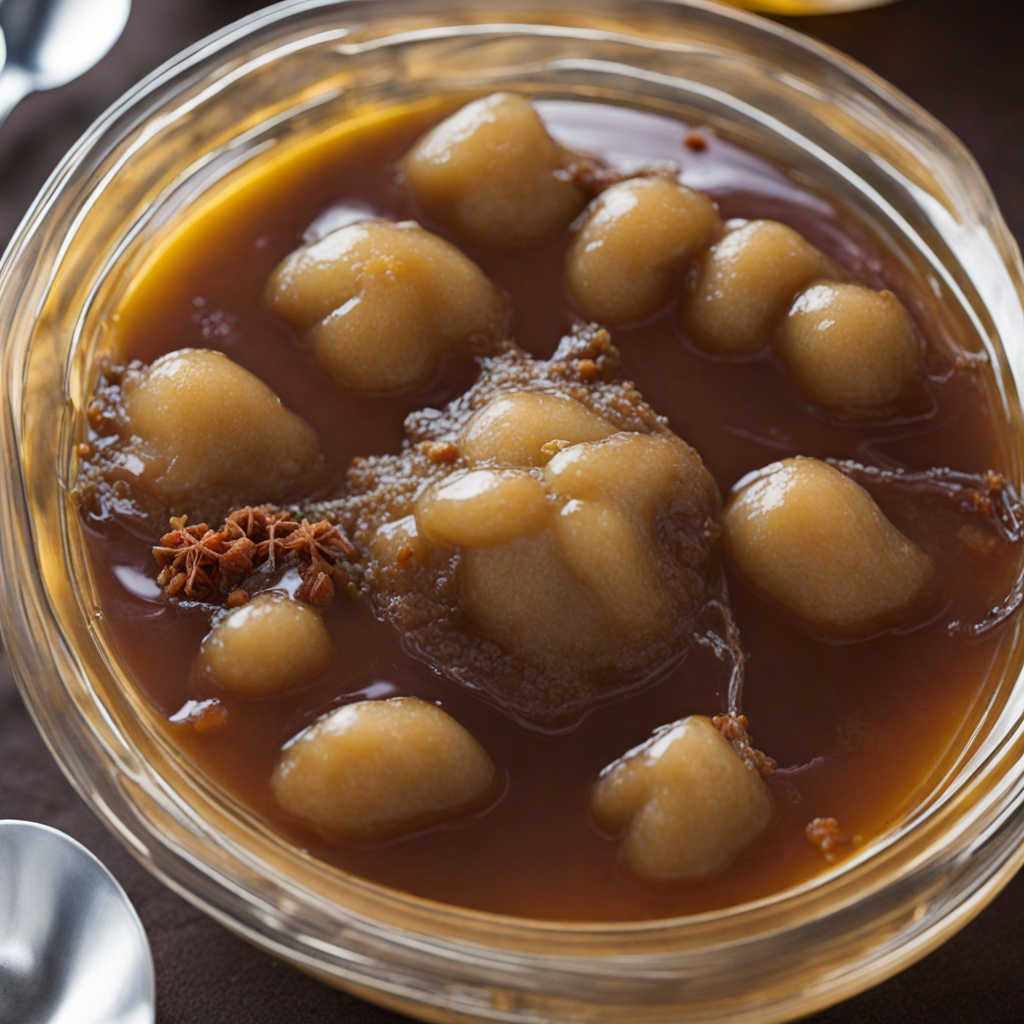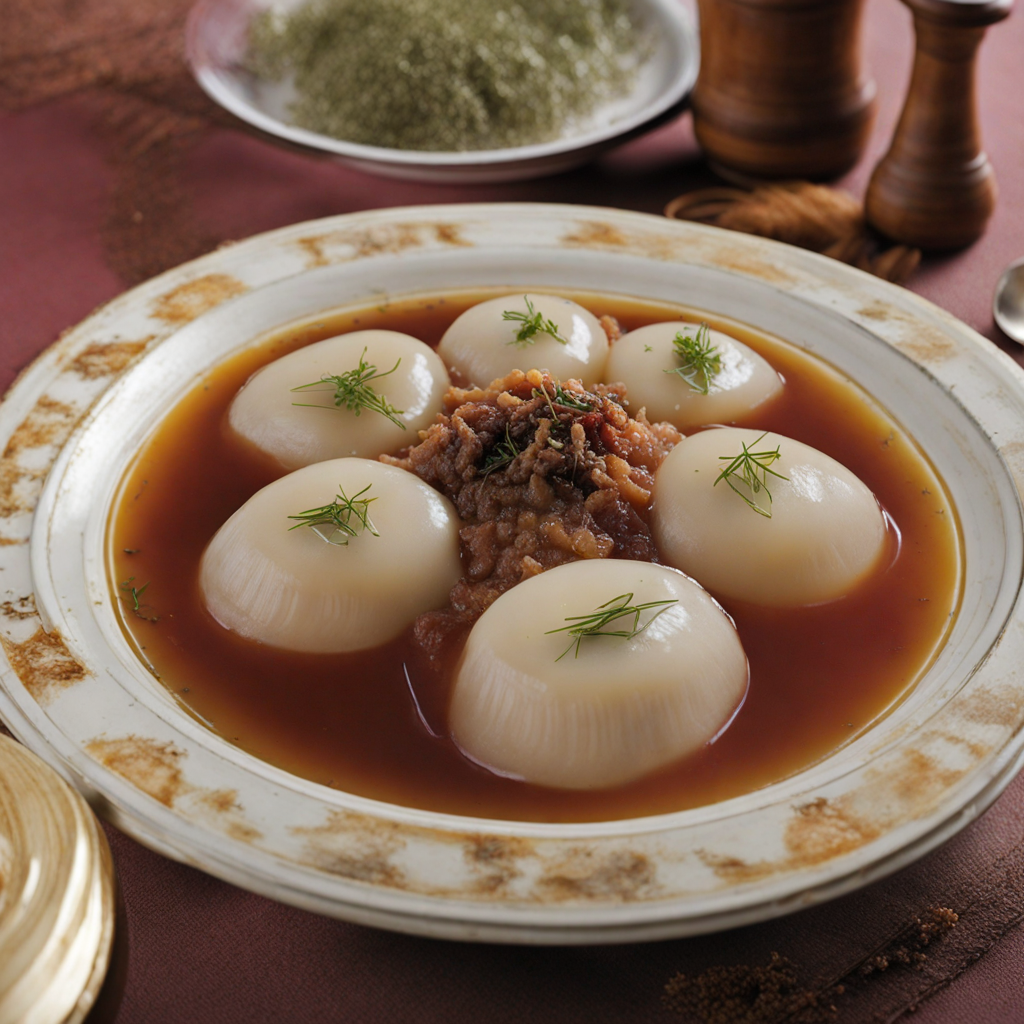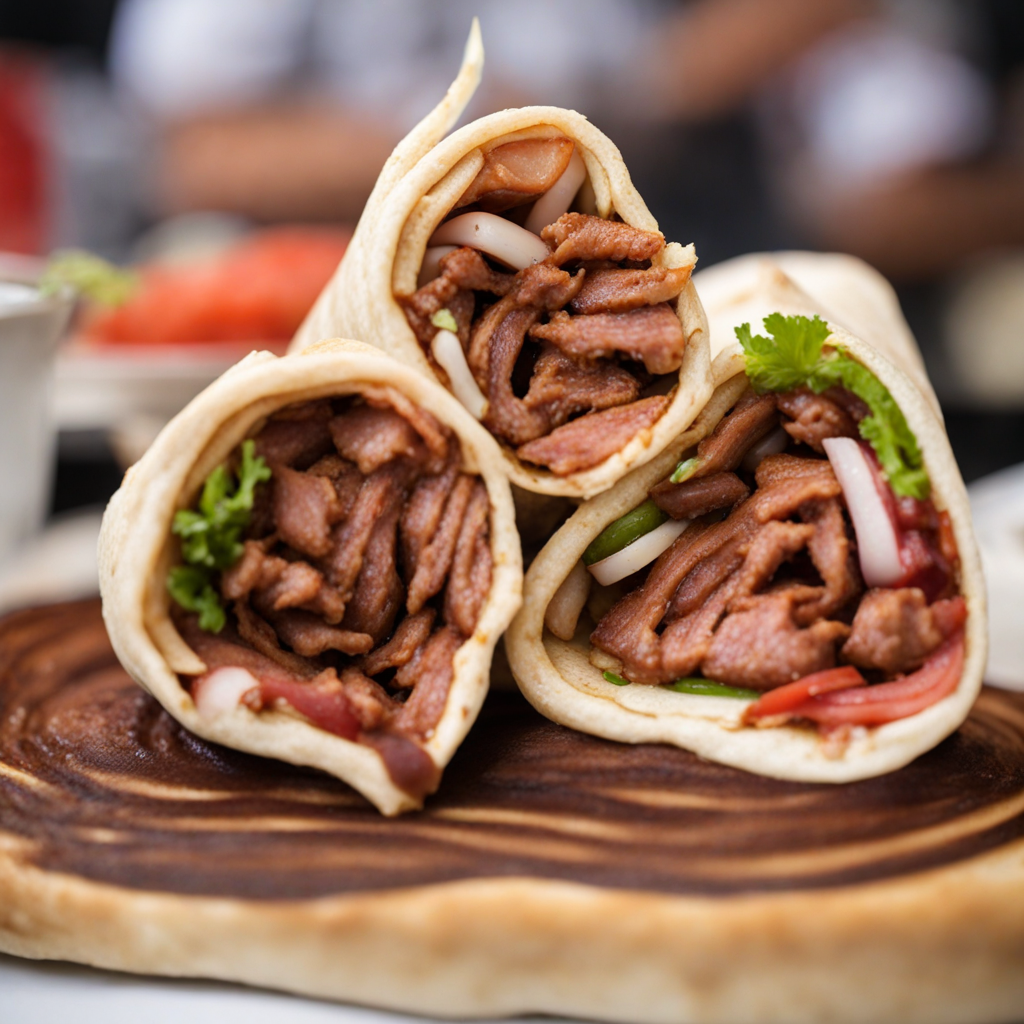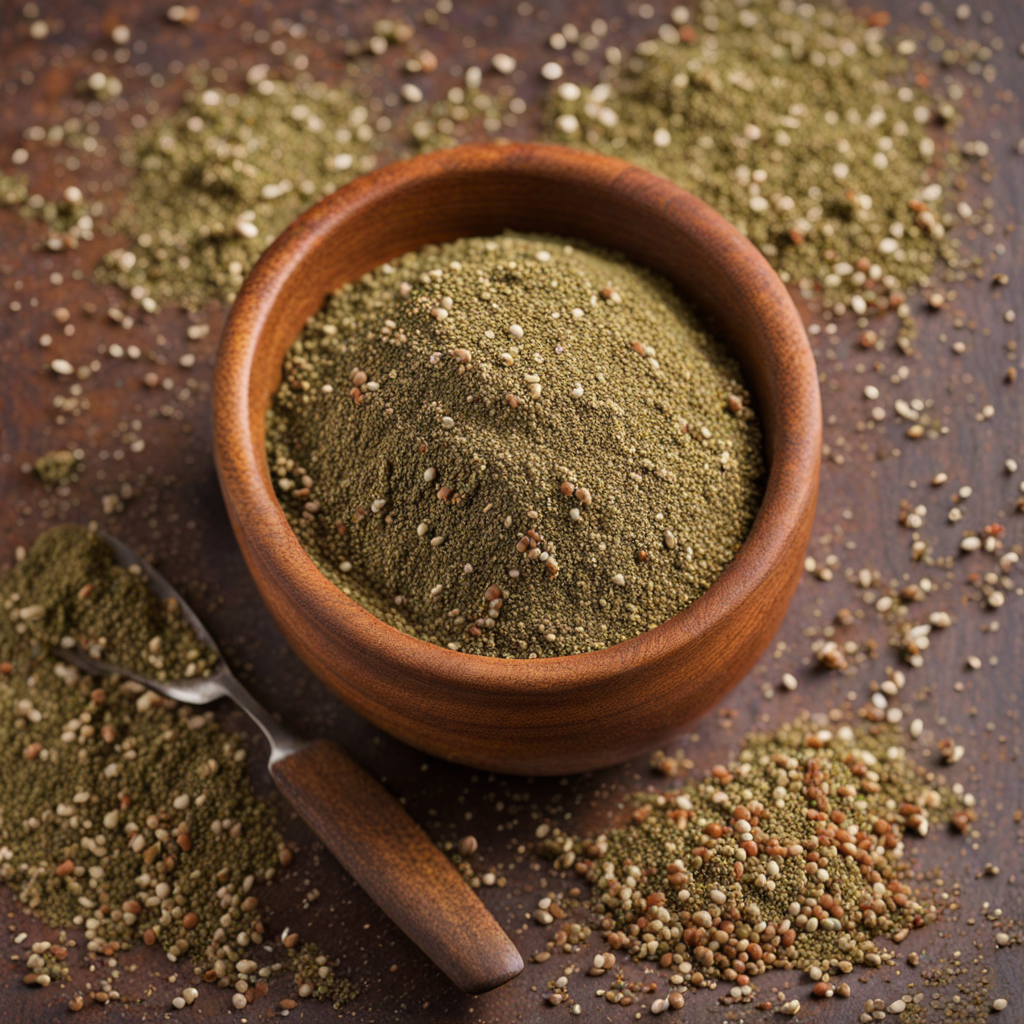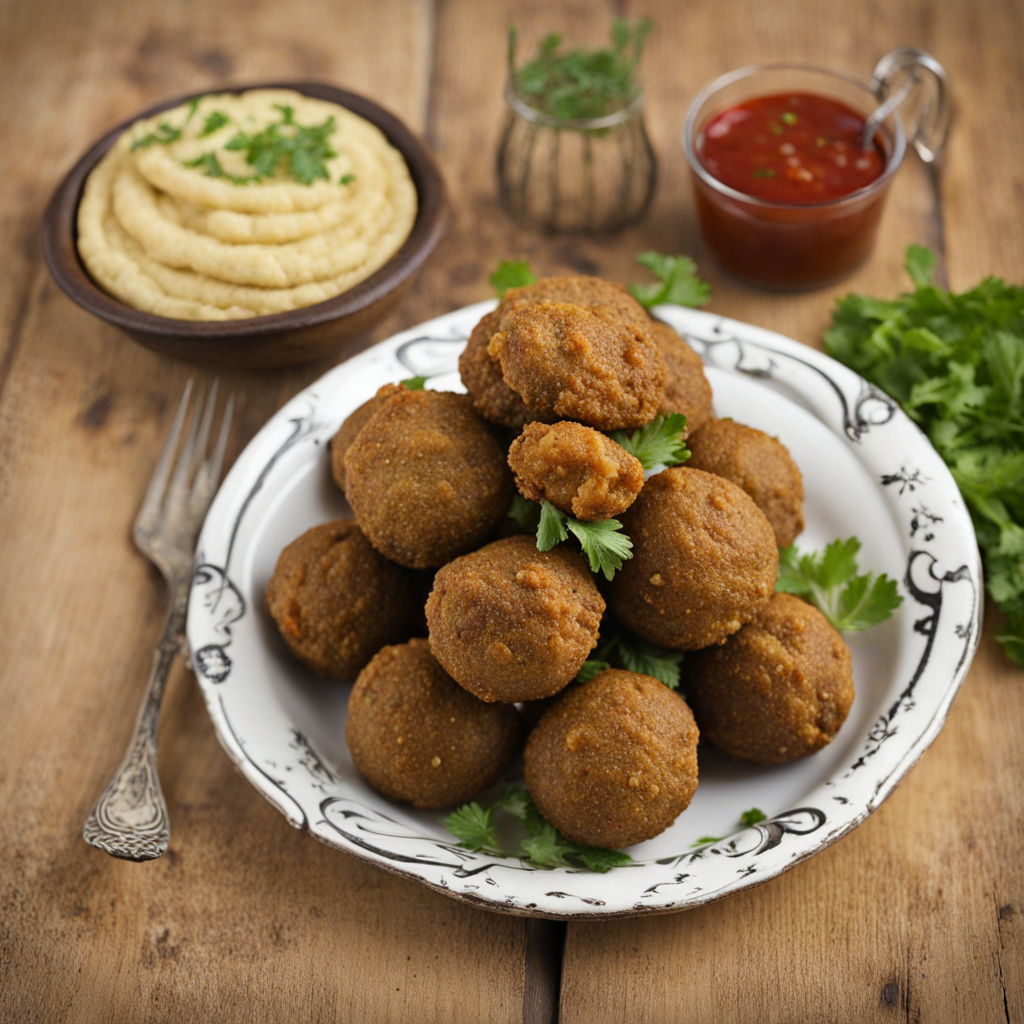Ptcha
Ptcha is a traditional Israeli dish that showcases the rich culinary heritage of the region. Made primarily from the trotters of a cow or sheep, this dish is often prepared as a gelatinous stew, where the meat is simmered for hours, allowing the collagen to break down and create a unique texture. The slow-cooking process infuses the meat with flavors from a medley of spices, including garlic, lemon, and various herbs, resulting in a savory, aromatic delight that tantalizes the palate. The dish is typically served cold, allowing the gelatin to set, giving it a custard-like consistency that is both intriguing and satisfying. The presentation of Ptcha is as inviting as its taste. When served, it is often accompanied by a drizzle of tangy vinegar or a sprinkle of fresh herbs, which adds brightness to the rich, meaty flavor. The dish is frequently enjoyed with a side of fresh pita bread or crunchy pickles, making it a wonderful addition to any mezze platter. Its unique combination of flavors and textures makes Ptcha not only a comforting dish but also a conversation starter at any table. Ptcha is more than just a meal; it represents a cultural experience, often enjoyed during family gatherings or festive occasions. With each bite, one can taste the love and tradition that has been passed down through generations. For those looking to explore new culinary horizons, Ptcha offers a taste of Israel's vibrant food scene, inviting adventurous eaters to discover the heartwarming flavors of this beloved dish.
How It Became This Dish
Origins of פטשה The dish known as פטשה (pronounced "p'tsha") has its roots in the rich culinary traditions of the Middle East, particularly within the Jewish communities of Eastern Europe and the Levant. Its name is derived from the Yiddish word for "to pound" or "to beat," which reflects the method of preparation that involves tenderizing meat. P'tsha is traditionally made using beef, often from the leg or shank, which is cooked slowly to ensure tenderness. The dish has been associated with Jewish holiday celebrations, particularly during Shabbat and Passover, where it serves as both a main course and a symbol of hospitality. The origins of פטשה can be traced back to the kitchens of Eastern European Jews, where resourcefulness was key to making the most out of available ingredients. As Jewish communities migrated to Israel, they brought their culinary traditions with them, adapting and evolving local flavors and ingredients. The incorporation of spices and cooking techniques from the Mediterranean and Middle Eastern culinary repertoire has further influenced the development of פטשה into what we recognize today. \n\n Cultural Significance פטשה holds a special place in the hearts and homes of many Israeli families, particularly those with Ashkenazi heritage. It represents not only a connection to ancestral traditions but also a celebration of family and community. On festive occasions, it is customary to serve פטשה alongside traditional side dishes, such as gefilte fish, matzo ball soup, or roasted vegetables, creating a multi-course meal that reflects the importance of gathering around the table. The dish is also significant in the context of Jewish religious practices. During Passover, for example, it is common for families to prepare פטשה as a way to honor the holiday's themes of liberation and heritage. The slow-cooked meat, often infused with flavors from garlic, onion, and various spices, serves as a reminder of the care and effort that goes into preparing a meal for loved ones. Additionally, the act of sharing this dish reinforces the values of hospitality and togetherness that are central to Jewish culture. \n\n Development Over Time As פטשה made its way to Israel, it began to absorb influences from the diverse culinary landscape of the region. The introduction of local herbs, spices, and cooking methods transformed the traditional recipes. For instance, Israeli chefs and home cooks began experimenting with ingredients like za'atar, sumac, and various types of chili pepper, infusing the dish with new flavors while still maintaining its essence. In recent decades, the popularity of פטשה has surged in Israel, particularly among younger generations seeking to reconnect with their culinary roots. Restaurants and food markets have started featuring the dish prominently on their menus, often presenting it with modern twists. For example, some chefs have begun to serve p'tsha in a sandwich format, using fresh pita bread and adding toppings like pickled vegetables and tahini, which not only makes it more accessible but also appeals to contemporary palates. \n\n Regional Variations As with many traditional dishes, regional variations of פטשה exist, reflecting the diverse cultural influences within Israel. In some communities, the dish is prepared with a sweeter flavor profile, incorporating ingredients like prunes or honey, which adds depth and richness to the final product. In contrast, other variations may feature a spicier or more savory approach, utilizing local peppers and spices that highlight the dish’s adaptability. Moreover, the preparation methods can vary significantly. While traditional recipes often call for simmering the meat slowly for several hours, modern adaptations may utilize pressure cookers or slow cookers to achieve similar results in a fraction of the time. This evolution showcases not only the influence of technology on cooking practices but also the desire to maintain the essence of the dish while catering to contemporary lifestyles. \n\n Contemporary Relevance Today, פטשה is more than just a dish; it has become a symbol of cultural identity for many Israelis. In a rapidly globalizing world, where culinary boundaries are increasingly blurred, p'tsha stands as a testament to the resilience of traditional cooking and the importance of preserving heritage. Food festivals and culinary events often feature p'tsha, where chefs showcase their interpretations alongside traditional recipes, fostering a sense of community and shared history. The dish also plays a role in the ongoing discussions surrounding food and identity in Israel. As the nation continues to evolve, the culinary landscape reflects its diverse population and the myriad of influences that shape it. P'tsha serves as a reminder of the rich tapestry of cultures that exist within Israel, inviting people from different backgrounds to connect through shared meals and experiences. \n\n Conclusion In summary, פטשה is not just a delicious dish rooted in tradition; it embodies the rich history and cultural significance of Jewish culinary practices. From its origins in Eastern Europe to its modern interpretations in Israel, p'tsha highlights the importance of food as a means of connection, celebration, and identity. As it continues to evolve and adapt, this beloved dish remains a cherished part of both family gatherings and the broader Israeli culinary scene, bridging generations and communities through the universal language of food.
You may like
Discover local flavors from Israel


